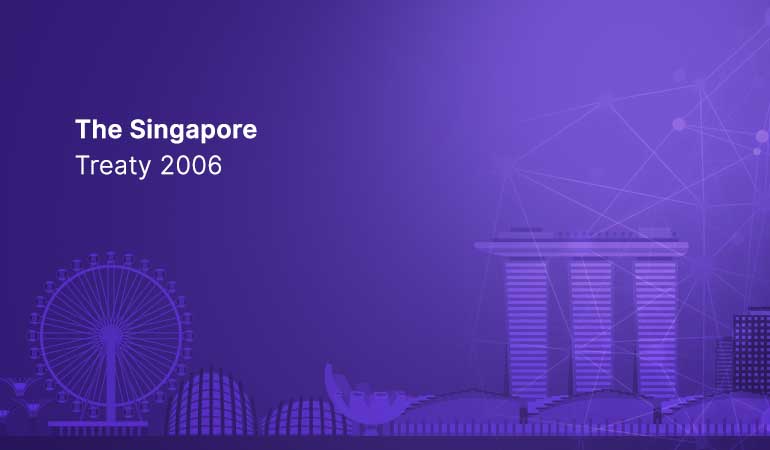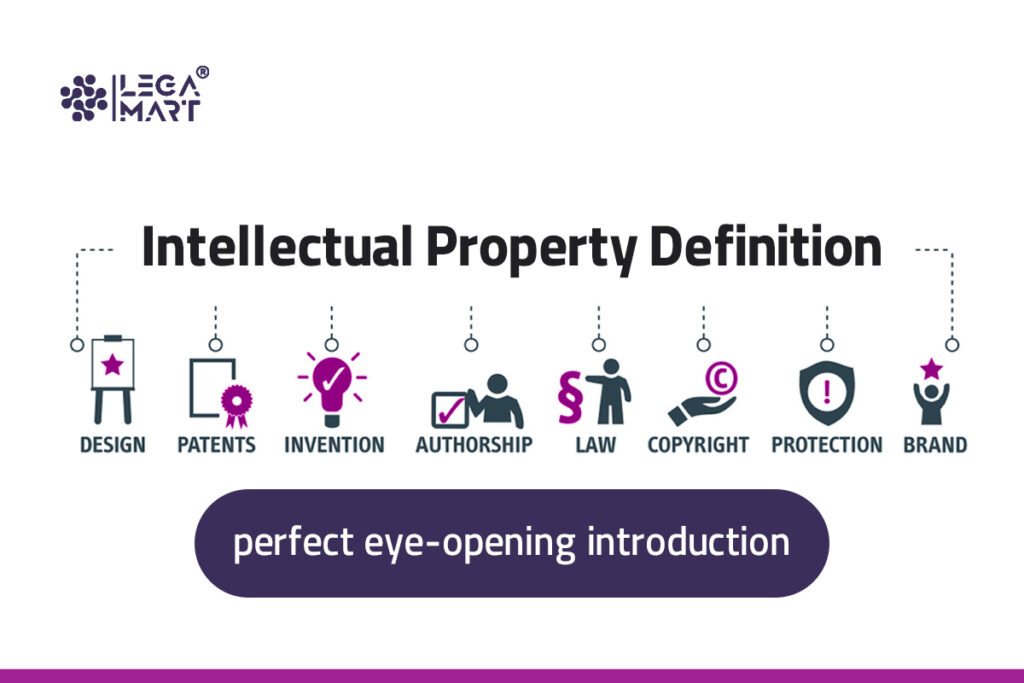Intellectual Property or as it is abbreviated IP rights results from a contract between the owner of the rights and the state. The national law determining these rights is a balance between the rights given to the property owner and the need for benefits to flow to society. You will be given many examples of this balance, particularly the legal principle and formalities that set limited terms for intellectual property rights beyond which anyone may use the invention or creation.
All intellectual property rights are also designed with a limited time, some depending on payment for maintaining the intellectual property right, after which they fall into the public domain to be used for further creative endeavors.
Intellectual property rights are one of the fundamental rights of individuals; with the increasing expansion of inventions and discoveries, writings, and intellectual and cultural products, the scope and influence of these rights have increased sharply.
In addition, in the developed countries, these rights, along with other individual and inalienable rights of individuals, such as the right to life, the right to self-determination, And the right to liberty, moreover even in the international dimension, the importance of these rights has gone so far that the World Intellectual Property Organization (WIPO) It is recognized as the fourth largest international organization affiliated with the United Nations. Also, the global regulations of WIPO are one of the main pillars of the World Trade Organization (WTO) rules.
World Intellectual Property Organization (WIPO)
WIPO is the global forum for intellectual property (IP) services, policy, information, and cooperation. We are a self-funding agency of the United Nations, with 193 member states. The mission of WIPO as declared in its constitution is to lead the development of a balanced and effective international IP system that enables innovation and creativity for the benefit of all. Our mandate, governing bodies, and procedures are set out in the WIPO Convention, which established WIPO in 1967.
4 Types of Intellectual Property
Copyrights, Trade Marks, Patents, and Trade Secrets are valuable assets of the company or an individual, and understanding how they work and how they are created is critical to know how to protect them. Let us see the definition of each;
Copyright
Copyrights protect original works of authorship, such as paintings, photographs, musical compositions, sound recordings, computer programs, books, blog posts, movies, architectural works, and plays. There are some things that are not “creative,” like titles, names, short phrases, and slogans; familiar symbols or designs; lettering or coloring; and mere listings of ingredients or contents. Copyrights protect expression and never ideas, procedures, methods, systems, processes, concepts, principles, or discoveries.
Companies can be copyright owners as the law allows ownership through “works made for hire” — works created by an employee within the scope of employment or certain independent contractors owned by the employer. Copyright law provides copyright owners with the following exclusive rights (among others):
- Reproduce the work
- Prepare derivative works
- Distribute copies by sale, transfer of ownership, or license
- Perform or display the work publicly
Works created on or after January 1, 1978, have a copyright term of life of the author plus seventy years after the author’s death. For works made for hire, copyright protection is 95 years from publication or 120 years from creation, whichever is shorter. Copyrights exist automatically but you can enhance the protection by registering the work. Copyright registration is not mandatory but allows copyright owners to seek certain types of monetary damages and attorney fees.
Notable exceptions to the exclusive rights are “copyright fair use” or the use of copyrighted works that have fallen into the “public domain.” As to the latter, in-house counsel must ensure any company copyrights are kept current until they otherwise expire.
Trademark
A trademark can be any word, phrase, symbol, design, or combination of these things that identifies your goods or services — it’s how customers recognize your company in the marketplace. We tend to use the term “trademark” generically as referring to both trademarks and service marks. A trademark is used for goods; a “service mark” is used for services.
A trademark has many benefits, including:
- Identifying the source of your goods or services
- Providing legal protection for your brand
- Guarding against counterfeiting and fraud
A trademark does not mean you own a particular word or phrase. Rather, you own the rights to how that word or phrase is used with respect to specific goods or services. The key to obtaining trademark protection is the need to identify the specific categories of goods and services the mark will cover. And, the company must actually use or provide such goods and services in the chosen categories — or have good faith and demonstrative intent to do so. Learn more about how to Trademark a Logo in the UK to secure comprehensive protection for your brand identity.
Patent
A patent is a government-granted monopoly to build, sell, and use your invention (and prevent others from doing so). If you are issued a patent, it’s usually good for 20 years; however, there are some patents that are only good for 14 years. After 20 years, your patent expires and anyone can copy, build, and sell your invention. In exchange for the “monopoly,” you must disclose the details of your invention to the public so that someone “practiced in the arts” could recreate it. To receive a patent your idea must meet four requirements:
The subject matter must be “patentable” (as defined by Congress and the courts).
- Your idea must be “new.”
- The idea must be “useful.”
- Your idea must be “non-obvious.”
There are three types of patents you can file for:
- Utility patent, which may be granted to anyone who invents or discovers any new and useful process, the machine, article of manufacture, the composition of matter, or any new and useful improvement thereof (good for 20 years).
- Design patent, which may be granted to anyone who invents a new, original, and ornamental design (good for 14 years).
- Plant patent, which may be granted to anyone who invents or discovers and asexually reproduces any distinct and new variety of plant (good for 20 years).
Patents can be expensive to obtain and maintain, as there are yearly or regular fees required to main them. And, like trademarks, patents are only good in the country where the patent was granted. So, in-house counsel must consider which countries and markets require patent protection.
Trade Secrets
While businesses have a lot of confidential information, not everything is a trade secret. A trade secret is typically something not generally known to the public, where reasonable efforts are made to keep it confidential, and confers some type of economic value to the holder by the information not being known by another party.
What exactly constitutes a trade secret can vary by state — in the U.S. — or by country. A good shorthand for what constitutes a trade secret is any information you would not want your competitors to have. Some examples of likely trade secrets include new business models; customer and supplier information, especially around price; marketing strategy; processes and formulae; and other confidential business information.
Even if you have plans, processes, or formulae that you don’t want your competitors to have, if the company doesn’t take appropriate steps to keep that information confidential it can lose the ability to claim such items are trade secrets. For example, if the company has handed out copies of its future marketing plans to customers without any type of non-disclosure agreement in place or failed to label the plans as “confidential,” the plans may not be treated as a trade secret.
Courts will generally look at the following factors to determine if something is a trade secret:
- The extent to which the information is known outside of the company
- Measures are taken to guard the secrecy of the information
- Value of the information to competitors
- The extent to which the information is known throughout the company’s employee base and others involved in the business.
- Money or effort spent by the company to develop the information and how easy would it be for others to duplicate the information.
Intellectual Property International Regulations

Paris Convention 1883
This convention was written to protect industrial designs. The rules of which are divided into national approach and protection/priority right in the registration of designs and general rules that must be followed equally in all countries.
As a general rule, under the Paris Convention, industrial design protection is territorial: this means that industrial design rights are limited to the country where protection is sought and granted.
If protection is desired in several countries, separate national applications must be made according to the applicable national law and procedures (which are usually different in each country). For instance, if protection is sought in countries A and B, an application should be filed with the IP Office of country A and another one with the IP Office of country B.
Iran joined the Paris Convention in March 1958 with the passage of the Iran Permission Act to accede to the International Union of Representatives of the Paris General Assembly for the Protection of Industrial, Commercial, and Agricultural Property by the National Assembly and the Senate.

Madrid Agreement Concerning the International Registration of Marks
The Madrid Agreement entered into force in 1891. Under this agreement, nationals of the Contracting States such a the US may, in the entirety of the Member States, guarantee the protection of marks that can be used for their goods and services which are registered in the country of origin by filing a file for registration of such marks in the Office of the International Intellectual Property referred to in the convention establishing the World Intellectual Property Organization through the relevant office in the country of origin (Industrial Property Office in Iran).
One of the two main requirements under the Madrid Agreement is that the trademark should be distinctive and should not be deceptive.
Trademark Law Treaties
There are two other treaties administered by WIPO, which make trademark formalities more user-friendly by harmonizing and simplifying specific procedures. The Trademark Law Treaty (TLT), was adopted in 1994, and The Singapore Treaty on the Law of Trademarks was adopted in 2006.
The Trademark Law Treaty (TIT)
This Agreement adopted in 1994 aims to standardize and streamline national and regional trademark registration procedures by simplifying and harmonizing certain features of those procedures. However, TLT makes trademark applications and the administration of trademark registrations in multiple jurisdictions less complex and more predictable.
Most of this treaty specified the formalities of the Industrial Property Office for the registration of trademarks, which are discussed in three stages: the registration declaration, the post-registration changes, and the extension of its ten-year validity.
The Singapore treaty on the law of trademarks

Singapore treaty adopted in 2006 has a wider scope of application and addresses more recent developments in communication technologies. Furthermore, the Singapore treaty is the first international instrument dealing with trademark law to explicitly recognize non-traditional marks, such as holograms, three-dimensional marks, color, position, motion marks, or sound.
To learn more about Intellectual Property regulations in other countries you can read the article below:
Do They Have Any Intellectual Property Rights in Iran?
Patent Cooperation Treaty (PCT)
The treaty was signed in 2000 in Geneva between 53 countries and the European Patent Office. The purpose of this treaty is to coordinate procedures such as the requirements for submitting a sample patent application and the content that the application must contain.
A Patent is a legal document that grants an exclusive right to the patented invention, which is a product or a process that provides, in general, a new way of doing something or offers a new technical solution to a problem. The usual effects of the grant of a patent are that the patented invention may not be exploited during the limited period in the country in which the patent is granted, by persons other than the patent owner, unless the owner agrees to such exploitation by others.
In other words, a patent protects an invention and grants the owner of a patent the exclusive right to decide who shall and who shall not exploit his/her patented invention during the limited term of patent protection.
A patent document published to the public at large indicates the scope of patent protection and contains a detailed description of the patented invention.
The Prominence of Intellectual Property
The intellectual property system as one of the complementary links in the development chain of countries has long been considered by policymakers in different countries. On the one hand, this system provides the legal security required by innovators, research institutes, and investment companies in innovation by formulating the necessary legal materials.
On the other hand, as a component of the national innovation system, it plays a vital role in promoting the learning process. Finally, a look at the experiences of industrialized and newly industrialized countries shows that one of the most important factors in these countries’ economic and technological progress is systematic planning to promote intellectual property protection because the intellectual property has an undeniable role in Technology development.
To Sum Up
These days, with developing and new born technologies, specially NFTs, you can not disregard the importance of the intellectual property field in the recent era, so having knowledge about these regulations in inevitable.
Intellectual property can be complex, especially in projects where innovative designs, technologies, or methods are involved. Clear and comprehensive contract terms are essential to address the ownership, licensing, protection, and resolution of IP matters. Legamart provides Legal counsel with expertise in construction and intellectual property law can assist in drafting and reviewing Design-Build Contracts that effectively manage these issues and protect the interests of all parties involved.




